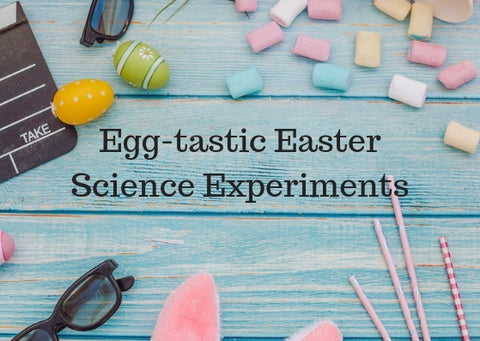
Easter is just around the corner and that means kids are buzzing with egg-citement. Painting, dying or filling them with small surprises, eggs form the centerpiece of Easter celebrations and hunting for those little colorful treats make for wonderful family memories. But once the search is over, you may be wondering what to do with that post-holiday pile of plastic eggs. In this post, we’re going to reuse them in simple science experiments that make for great STEM enrichment activities for your little ones.

- Egg Geodes
Have you ever tried making cool crystal geodes? All you need is some egg dye, the plastic egg molds, glue, potassium aluminum sulfate - or household alum - and a bit of science trickery to create this homemade Easter experiment. Get the details on how to grow these way-cool geodes from Professor Figgy and make sure you assist your budding science buff throughout the process.
- Slime in a Pod

The stretchy, gooey goodness of slime is all the rage right now and combining that with Easter eggs will make for hours of sensory play. Not only are the plastic egg molds easy to handle for little hands, but they also contain the mess so you can store them easily after a crafty afternoon. Just take the eggs and a Creative Chemistry set from Click-a-Bricks, which includes all the ingredients and how-tos and be on your way to oozy fun.
- Bath Bombs

Plastic Easter eggs and a few basic ingredients you have lying around the house is all you need to create the fizzing reaction of a good bath bomb. Creating these vibrant bath accessories definitely requires adult supervision as they contain citric acid and fragrant oils, but kids will have a blast formulating, decorating and using these bath bombs in the tub. Find out what’s exactly needed for this project at SoapQueen.
As you’re making these experiments, take the opportunity to talk to your child about the chemistry and science behind how these crafty projects are made. It will surely be a fun learning experience for the whole family.




Comments